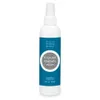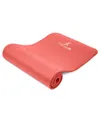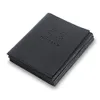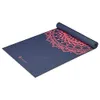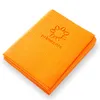11 best yoga mats 2025: Tested by yoga instructors and fitness experts
Find the best yoga mats for your practice
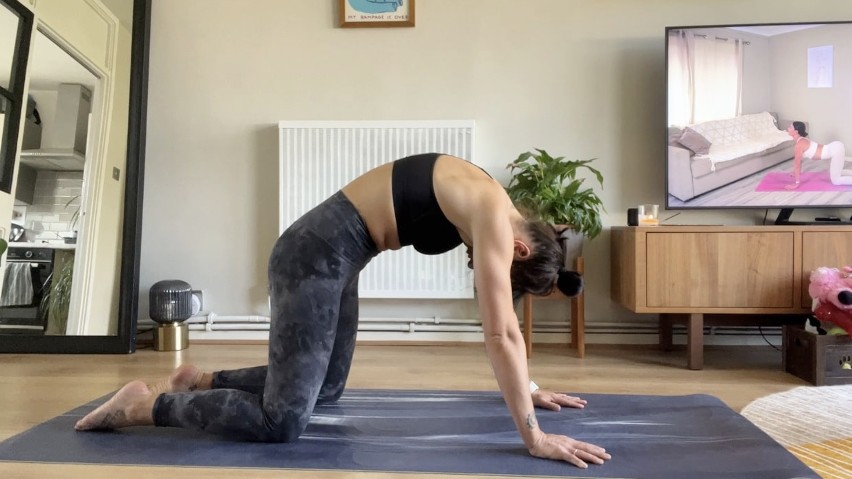
The best yoga mats are essential to help make the most out of your yoga classes, and if there's anything we wish we had known as yoga beginners, it's that your yoga mat is essential to your practice.
We've been testing the most popular brands for years to help you decide which yoga mat is best for you, frequenting local yoga studios or practicing from home to get to grips (quite literally) with each one over time. For that reason, we know how these mats fare with constant use.
We've tested across Yin, hot yoga and dynamic flows, and even caught up with yoga and Pilates instructor Eloise Skinner for her advice on what to look for when buying the best yoga mats.
If you enjoy hot yoga, the super grippy Yogi Bare Paws tops our list with its sweat-wicking properties. And for Yin yoga lovers, we love the extra thick and plush ProsourceFit yoga mat if your joints need a little TLC.
We've cut down the homework time by writing this handy guide on the best yoga mats to follow, keeping planet-friendly and sustainable options in mind. Grab this yoga block accessory, hit download on the best yoga apps and read on.
5 best yoga mats: Test results
| Row 0 - Cell 0 | Lululemon 'The Mat' | Manduka PROlite | Yogi Bare Paws | Jade Harmony | Liforme |
| Awards | Best overall | Best for sweat | Best hot yoga | Best eco-friendly | Best for alignment |
| Score | 4.5/5 | 3.5/5 | 4/5 | 4/5 | 4/5 |
| Pros | Fabulous grip, cleans easily, plush, multi-purpose, reversible | Easy to clean, anti-bacterial design, resists sweat brilliantly, rated by yoga instructors, travels well | Superb for hot yoga, features alignment cues on mat, super grippy | Sustainable, eco-friendly, very grippy, loved by instructors | Wonderful grip, alignment cues on mat |
| Cons | Heavy duty, expensive | Takes time to break in, expensive | Rubbery smell, heavy, scuffs easily | Expensive, latex, hard to clean due to materials | Heavy, premium price tag |
| Materials and thickness | Contains latex, FSC-certified natural rubber base, antimicrobial layer, 5mm | Bimodal foam, 5.0% polyester scrim + 95% PVC OEKO-TEX certified Standard 100 PVC, 4.7mm | Natural rubber base, non-slip PU upper, PVC and plastic free, biodegradable, 4mm | Rubber from renewable rubber trees, no PVC or EVA, 4.7mm | Natural rubber base, eco-polyrethane top surface, 4.2mm |
| Weight | 5.24lbs | 4lbs | 5.5lbs | 5lbs | 5.5lbs |
| Verdict | Lululemon is known for high-end luxe activewear, and this yoga accessory aligns perfectly with the brand ethos. | Top rated by instructors around the world, the Manduka travels well and provides super-dense cushioning with a textured top layer to provide support and protection. | Pro-grade grip, stable surface, subtle alignment markers, innovated and tested by yoga teachers and pro athletes | Great traction and cushioning while remaining good for the environment. Incredible grip and eco-friendly, the company plant a tree for every mat sold. | Grippy, planet-friendly and complete with AlignForMe alignment markers to intelligently guide yogi through their practice. |
Best yoga mats you can buy 2025

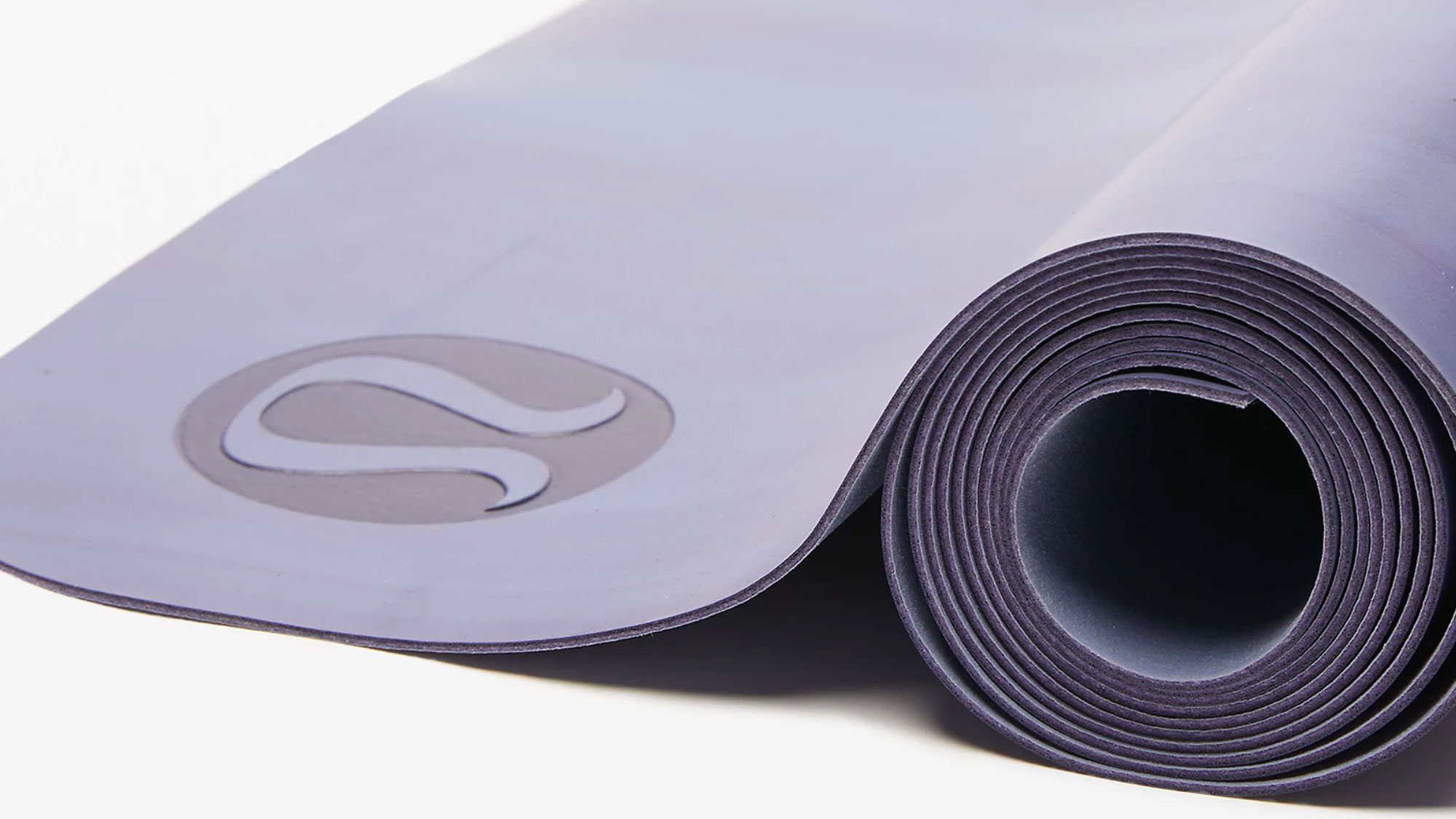
Best overall
+ Great grip
+ Plush, multi-purpose
- Expensive
- Heavier duty than other models
For those who want to take one of the best yoga mats on the go, Lululemon’s The Mat 5mm is extremely versatile. Roll it up and take it to the park for an outdoor workout, to the studio, or on a trip.
The rubber base provides support and decent cushioning, while the polyurethane top absorbs moisture and sweat. Plus, the mat has an antimicrobial additive to prevent mold. You get 5mm of plush cushioning and plenty of beautiful colors to choose from (typical, Lulu).
Overall, Lululemon customers are pleased with the mat’s quality (though they did point out its initial strong smell and it does feel heavy at 5.25 lbs). “This mat is perfect for me. It is lightweight and easy to clean,” one reviewer wrote. Another added, “I needed something thin with a grip that I could use for home workouts. My previous mat would get in my way when I’d do burpees. This one stays put!”

Best budget
+ Cheap
+ Portable
- Less durable
- PVC
The extremely affordable BalanceFrom GoYoga mat has everything you need: double-sided non-slip surface, lightweight, easy to wash and clean and portable (a strap is included).
The high-density, ¼-inch foam material ensures comfort for your spine, knees, elbows and hips. The moisture-resistant technology means you can sweat it out without worrying about slipping and injuring yourself. And the BalanceFrom mat is extremely cheap — though that means it will flake, tear and fall apart faster than other mats.
“I use it for more strength and core movements (push-ups, burpees, bridges, lunges, etc) and also use sneakers on it often,” one Amazon reviewer wrote. “For the beating that I put on these mats, I honestly think it's a great price.” Another noted, “The mat is good quality for a low price, and definitely a worthwhile buy for anyone looking to dip their toes into a yoga practice.”
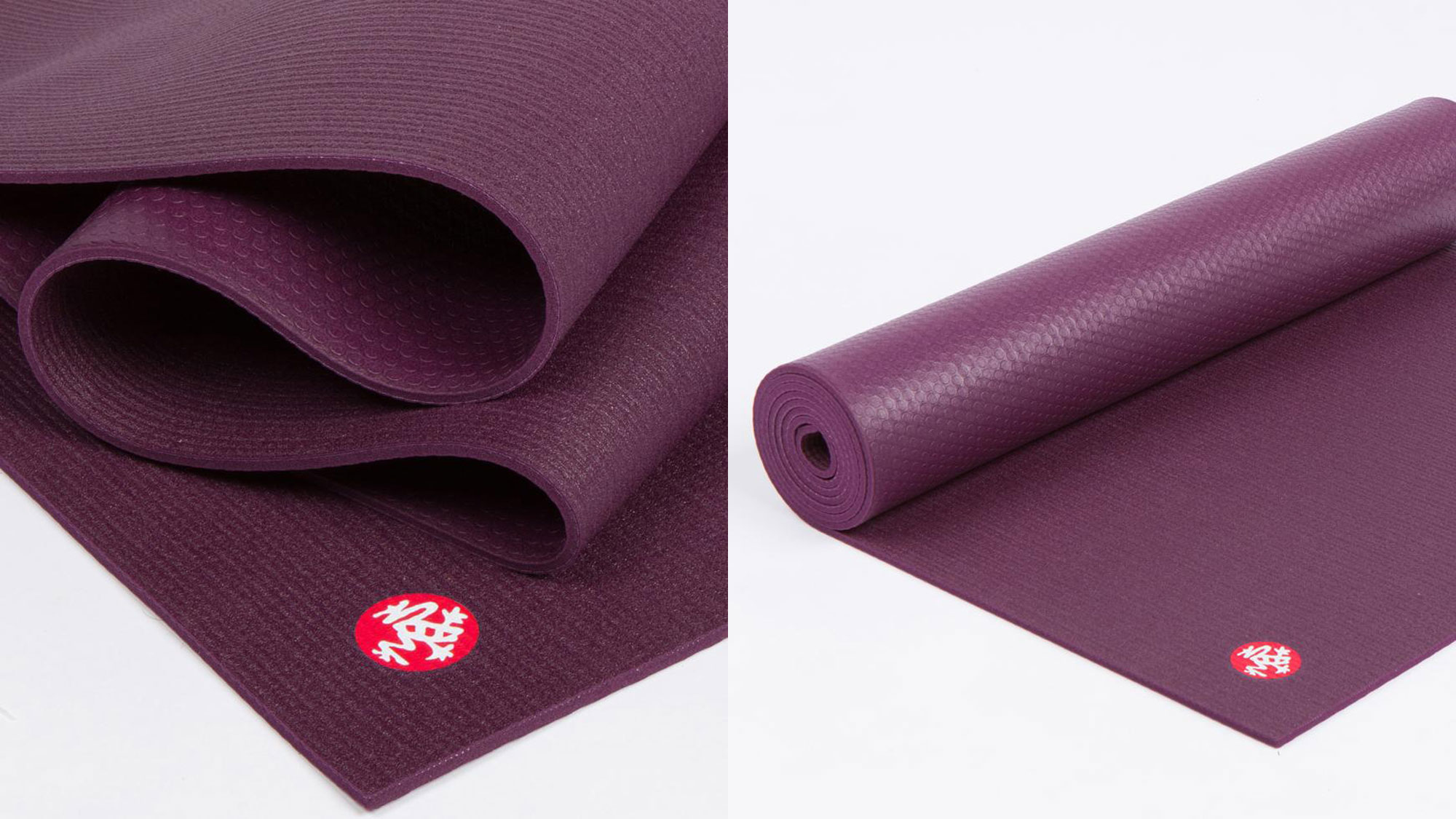
Best sweat-proof
+ Easy to clean
+ Closed-cell anti-bacterial design
- Expensive
- Takes breaking in before it becomes grippy
If you're looking for a mat that's kind on the planet, the Manduka PROlite may be the best buy for you. It has been voted the number one mat recommended by teachers worldwide and comes in three sizes.
The mat is made with premium recyclable materials and doesn't feel heavy to carry around if you take your yoga classes at a local studio.
The Manduka mat is designed by yoga teachers which explains its near-flawless performance. We found that the mat's 'catch-grip' technology gives the right amount of grip and flexibility to flow between poses. Note, that it is worth keeping a towel to hand as the sticky closed-cell top surface won't absorb sweat, but this does mean the mat stays fresher for longer.
Provided that you limit sun exposure, avoid vigorous daily use, and store it in a carry bag, it's one of the most durable mats you'll find. You can rely on 4.7mm of thickness, too, and no bounce-back.
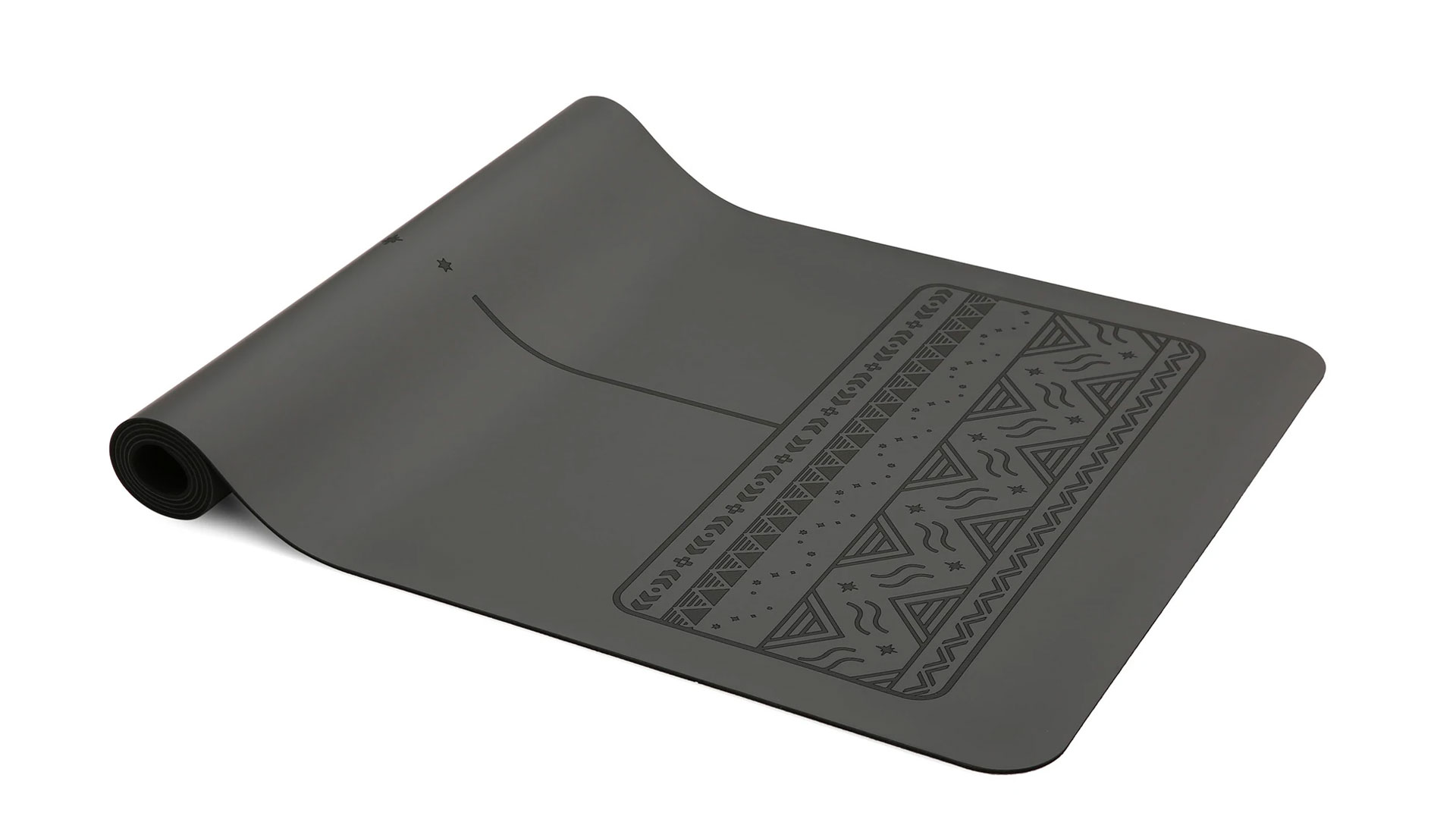
Best for hot yoga
+ Super grippy
+ Alignment cues
+ Feels plush
- Heavy
- Rubbery smell
- Scuffs easily
The best yoga mat for hot yoga fans is the Yogi Bare Paws Extreme Grip Yoga Mat. It will stop you from slipping when a session gets sweaty and has etched-in alignment markers to help you hit those poses.
The 4mm deluxe mat is biodegradable, vegan-friendly and made with fully sustainable materials, (including 100% recyclable packaging), so scores high for its environmentally friendly credentials.
Minor niggles are that it's heavy to carry at 5.5lbs, although you can buy a Yogi Bare carry strap to lighten the load. It also smells rubbery at first. That said, the benefit of this natural rubber and polyurethane blend is that it doesn't shift beneath you and offers plenty of support when used on all kinds of floor surfaces.
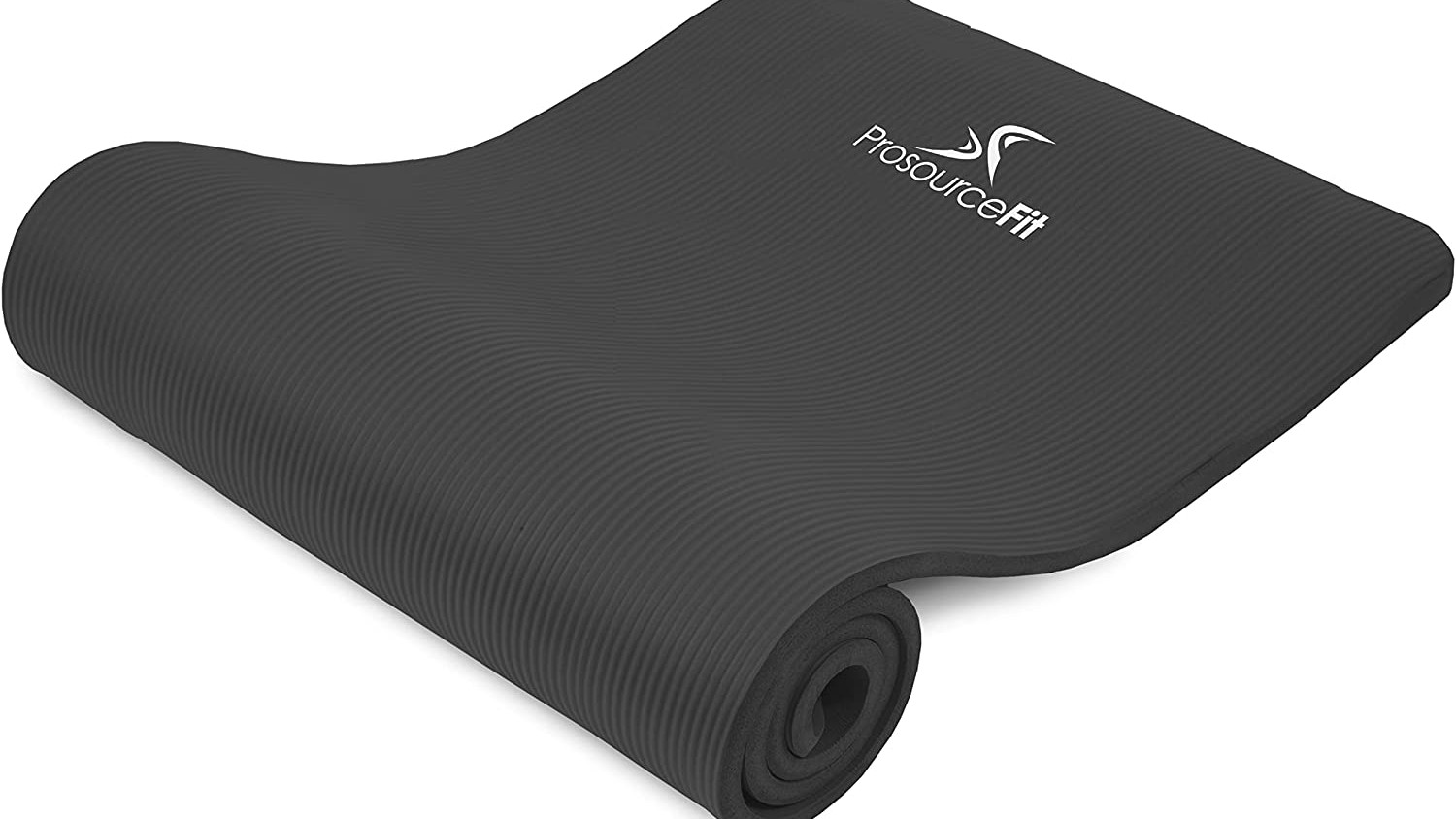
Best extra thick
+ Comfortable cushioning
+ Multiple uses
- Less durable
If you have extra sensitive joints or body aches and pains, the ProsourceFit Extra Thick Yoga Mat is one of the best yoga mats for you. The ½-inch foam provides comfortable cushioning even on hardwood floors and will be gentle on your knees, back and hips. The non-slip surface ensures a stable base for yoga, pilates and other workouts. The mat is lightweight and portable, thanks to an included sling, and can even be used as a sleeping mat when camping.
A reviewer on ProsourceFit’s website wrote, “I love my new yoga mat and it’s great for the wooden floor in my apartment. There’s enough support for my knees and wrists when I do yoga classes at home.”
Multiple five-star Amazon reviews also pointed out the comfort factor of the mat. “After about a year into use as my yoga mat, I had a failed back surgery that left me in a lot of chronic pain. At this point, it became my favored mat for a ton of different activities.”
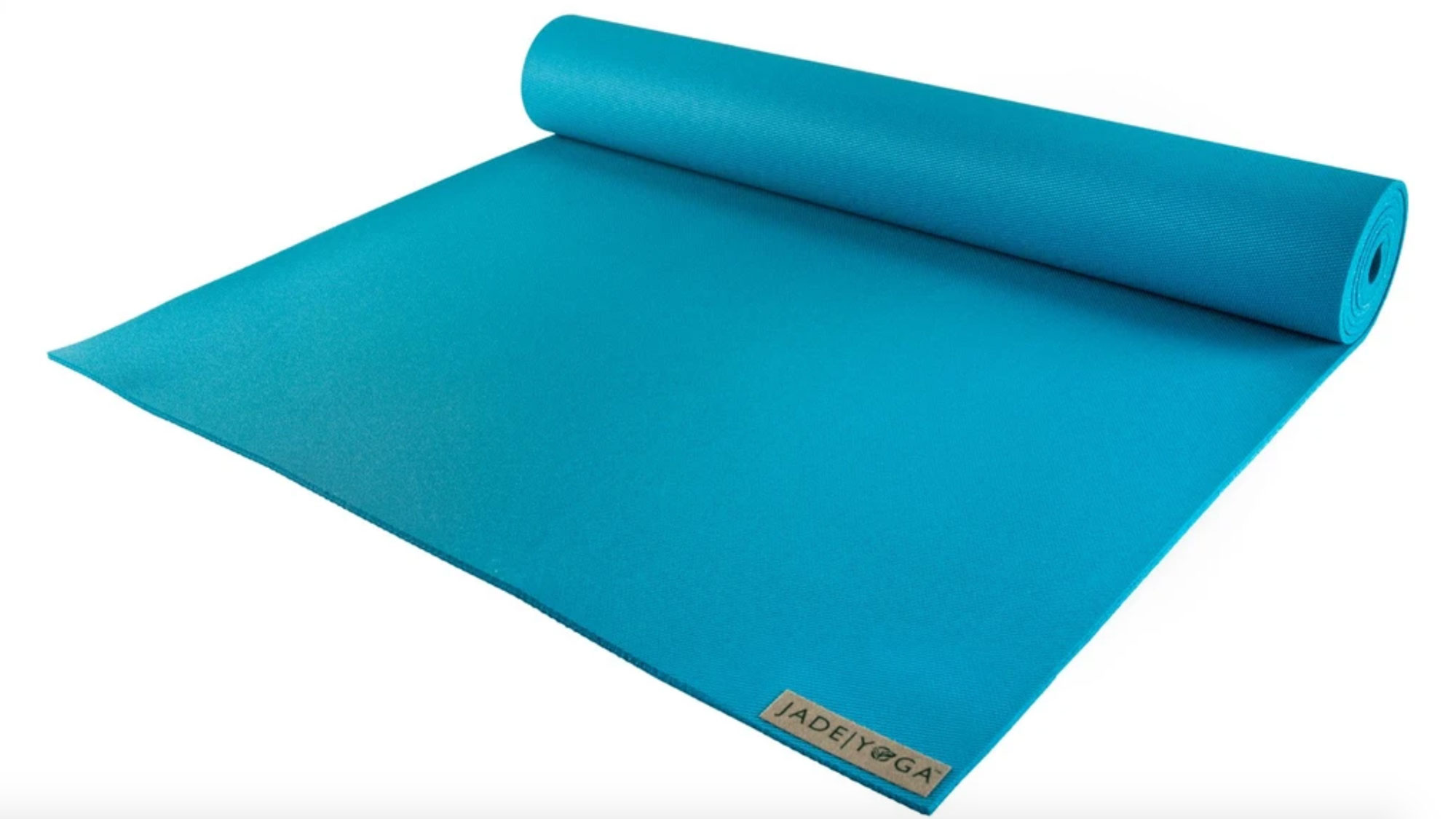
Best eco-friendly credentials
+ Sustainable and eco-friendly
+ Super grippy
+ Versatile
- Expensive
- Latex
- Hard to clean
Jade Harmony self-titled this "Nature's best yoga mat," and it's hard to disagree.
Environmentally-conscious yogis and fitness buffs will rejoice in knowing that the Jade Harmony Mat is sustainably made from rubber sourced from renewable rubber trees. Jade mats contain no PVC, EVA, or other synthetic rubber. Plus, the company plants a new tree for every mat sold. The material provides a ton of traction and stability, which makes it one of the best yoga mats for sweaty workouts and hot yoga.
Reviewers on Jade’s website also noted the mat’s durability. “I’ve had my mat for SEVEN years and I still can’t find a reason to replace it,” one wrote. Another raved about the moisture-resistant surface. “This mat is perfect. I sweat buckets and almost never need to use my full-mat-length towel.” It’s the choice for quite a few yoga teachers, as well, as one explained, “Let’s just say I have been teaching for ten years and absolutely love the harmony yoga mat! Unsurpassable quality, grip and comfort.”
That said, yogis should know the rough rubber texture attracts dirt and dust, making it hard to spray down and clean off post-use. It's also not the most travel-friendly, but if you only plan to practice at home, who cares?
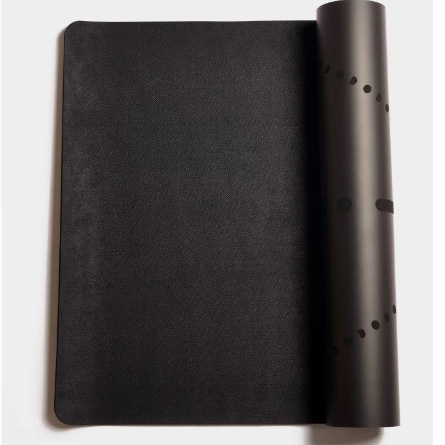
Best sustainable and grip
+ Superb grip
+ Well designed
+ Sustainable
+ Sticky
- Made from latex
- Scuffs easily
As its name suggests, the main selling point of the Super Grip Yoga Mat is its grip didn’t disappoint when we used it during our regular hot yoga class. The grippiness of the mat also really helped during a HIIT workout and staying in position when doing press-ups, mountain climbers, and the plank. It also helped us keep our feet in place when doing lunges with weights, an exercise that often causes a lot of wobbling.
The trouble with its super stickiness, however, is that it also attracted a ton of dirt and fluff from the floor. This isn’t too much of an issue and can be counteracted by regular cleaning and the use of a carry bag but it’s a bit disappointing considering the price tag.
If you’re looking for a multi-functional mat with plush 5mm cushioning that works just as well at the yoga studio as in a HIIT class, then this is a solid investment. Resilient enough for daily use, it comes with a good amount of cushioning that should suit most yogis.
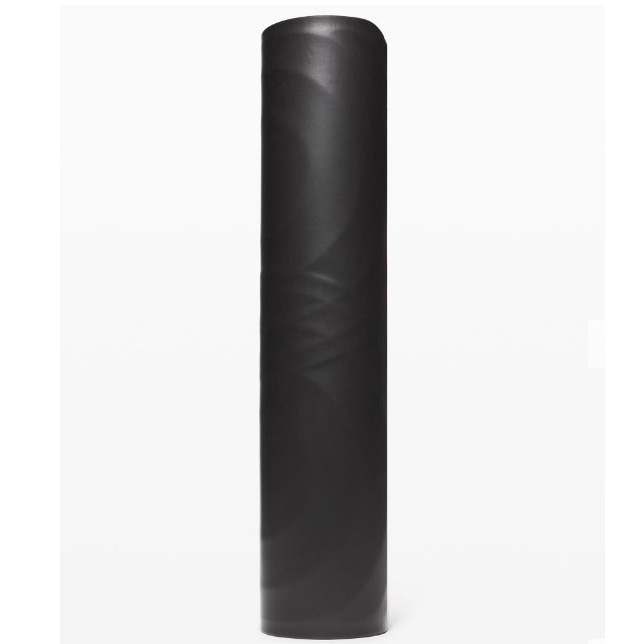
Best stylish
+ Beautiful design
+ Alignment cues
+ Plush thickness
- Attracts dust
- Heavy to carry
- Scuffs
Lululemon is undeniably the maker of some of the best yoga mats and exercise gear on the market, and this model is a testament to their attention to detail, beauty and quality design. 5mm of plush thickness helps you pad down for slower practices like Yin while still firm enough to hold you during advanced practice, balances and inversions.
The grippy natural rubber texture keeps you positioned properly during vital poses like downward dog, still allowing you to transition from posture to posture without the sticky and restrictive feel of mats like the Manduka PRO Lite. Besides, it looks stunning to roll out during yoga classes.
Our in-house personal trainer uses this mat to teach, and it's just as durable now as it was when she got it over a year ago.
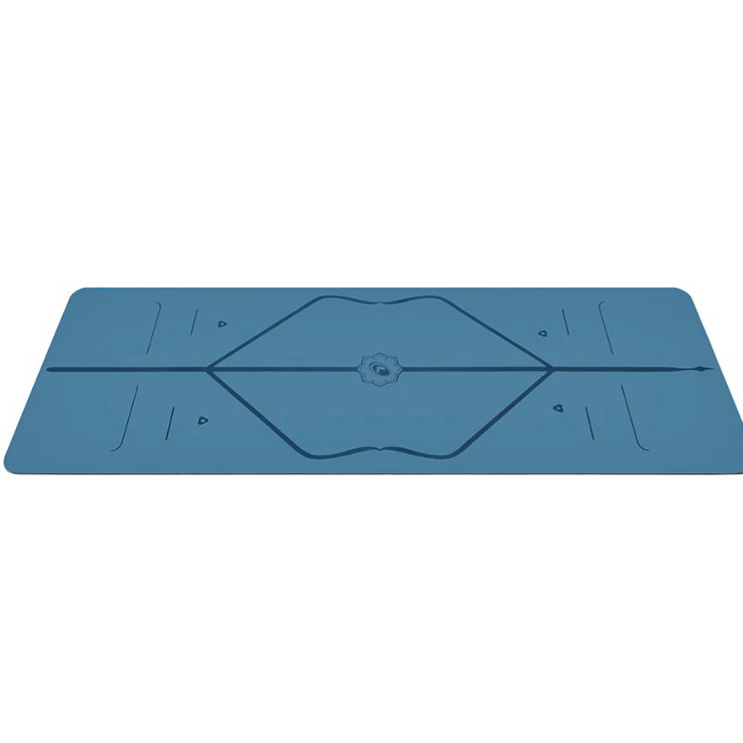
Best for alignment
+ Great grip
+ Alignment cues in-built
- Premium price point
- Heavy to carry
The Liforme yoga mat offers 4.2mm thickness but feels heavy duty to carry, although it comes with a really handy case with strap so that travel isn't really an issue.
We love the design which should help any yogi find better alignment during postures, plus the fun colors will have others asking where you shopped yours from.
The grip and plush cushioning are what escalated this mat to our best yoga mats line-up, and with the rubber base, polyurethane top surface and non-toxic and eco-friendly ink, the mat gets a pick tick for eco-friendly credentials, too.
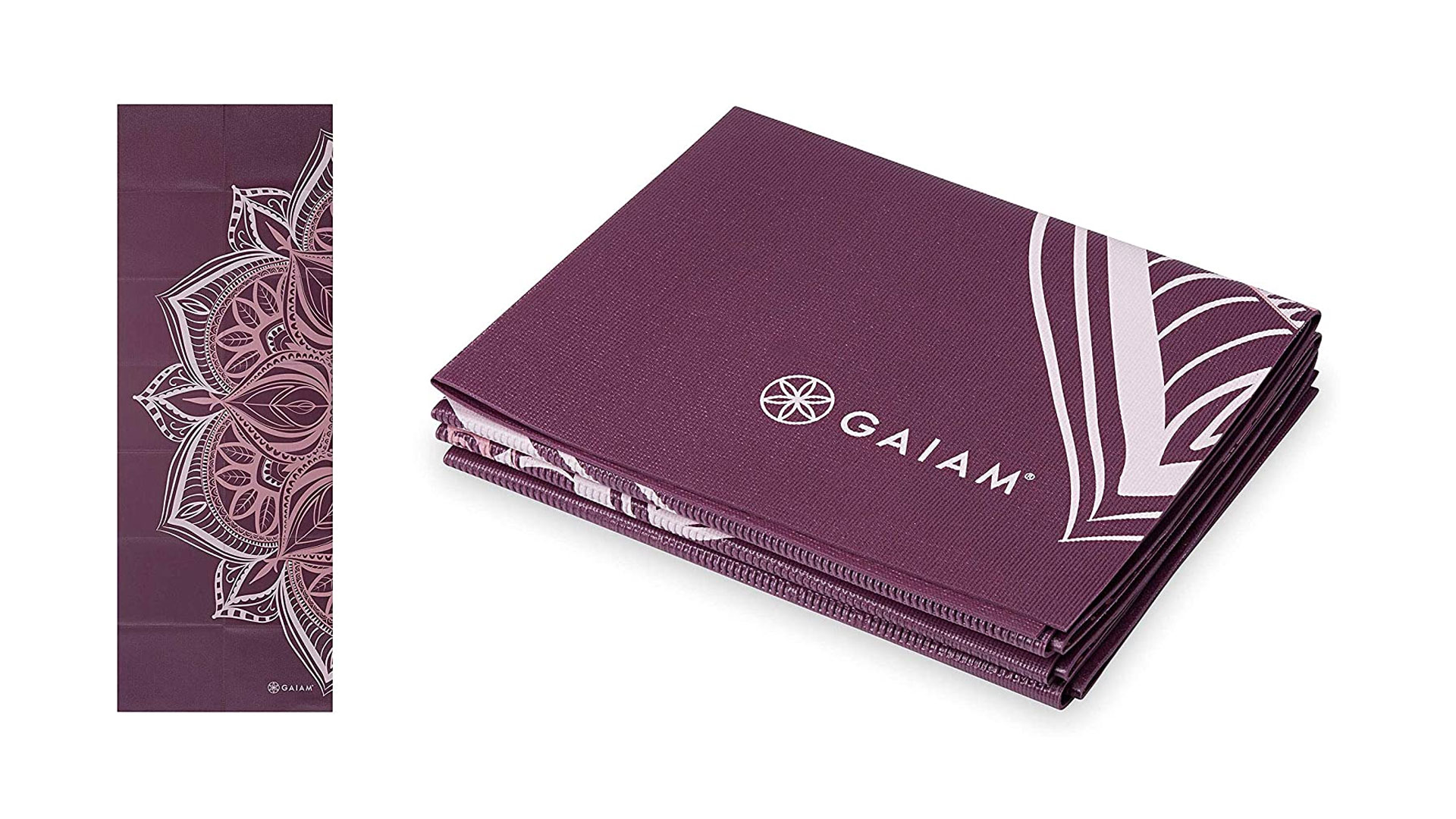
Best foldable
+ Affordable
+ Lifetime guarantee
- No strap
The Gaiam Premium 2-Color Yoga Mat is perfect for beginner and experienced yogis, as well as anyone looking for a fitness mat to work out at home. The 6mm-thick, PVC surface provides decent cushioning and is textured to be non-slip. The mat is reversible, so you can choose which of the two colors to use on any given day. If your mat doesn’t hold for any reason, Gaiam also offers a lifetime guarantee.
Reviewers on Gaiam’s website were impressed with the quality and “beautiful design” at such an affordable, reasonable cost. One reviewer said, “This is a great mat for a great price. It stays put, the material doesn't flake off, it's thick enough but not too thick and my hands and feet don't slide around. Very comfortable and vibrant colors.” Another said, “This mat has lasted me a few years now and still looks new.”
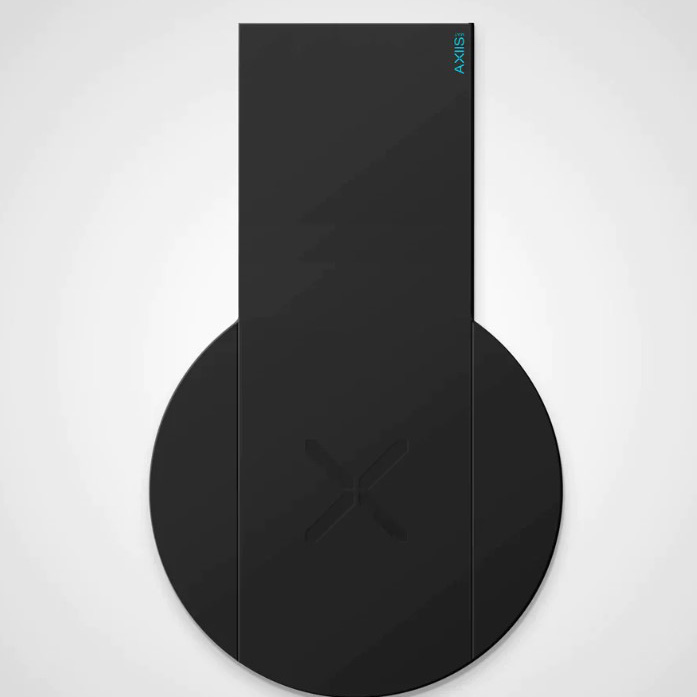
Best for 360-degree workouts
+ Brilliant grip
+ Spacious 360-degree workouts
+ Comes with docking station for iPad and smartphone
- Large
- Hard to roll
- Heavy duty
The AXIIS mat yoga mat comes complete with a docking station and expanding wings, offering yogis an extra 50% surface area suitable for Mandala flows or hybrid workouts.
Its non-slip surface provides balance and stability during yoga poses, and high-density foam gently supports joints during Yin-style classes. Perfect for home gyms and studios, the mat rolls up and stows away, but takes up quite a bit of space on your floor.
Buyers get a one-year warranty, a whopping 7mm of thick plush cushioning and can benefit from a closed-cell structure to prevent moisture absorption, mold, or bacteria build-up.
How we test the best yoga mats
Whenever we can, we call in the best yoga mats to test them out. Every few months, we'll scour what's out there and note any latest releases from brands, discontinued products, or new yoga mats on the market that we're yet to test and add them to our "to test" list.
As of this year, our in-house instructor has taken on testing and reviewing yoga mats, and we've also consulted a qualified yoga and Pilates instructor to guide you on choosing the best yoga mat for you, including what to avoid and big green ticks to look for.
Where possible, we strive to take these yoga mats into the world, testing them across various classes and locations. Our main testing areas include thickness, grip, size, price, value, sustainability, and how well they travel. We also like to keep hold of our mats to see how they fare over time, including any scuff marks or damage, and what to do when they've reached the end of their life.
On occasion, we might not be able to test the yoga mats we add to our guide. That doesn't mean you should avoid them! We've done our due diligence, researched the yoga mat, and checked independent reviews to ensure we're giving you all the information we can to make an informed choice.
How to choose the best yoga mat for you
When shopping for the best yoga mats, Skinner gave us a few pointers to look out for.
"The best yoga mat really depends on what type of practice you're interested in," she says. "For most dynamic forms of yoga, a strong grip will be important, especially for hot yoga, which often requires a specific material designed for a hot studio.
In terms of size, yoga mats tend to be fairly standard-sizing, although you might prefer a smaller mat for travel, or a specific hands-focused mat for handstands and inversion practice."
For thickness, Skinner recommends going plush on your mat for a slower, floor-based practice like Yin or if you're doubling up to use your mat during a Pilates or stretch practice. A slightly thinner mat suits a more dynamic practice or for travel.
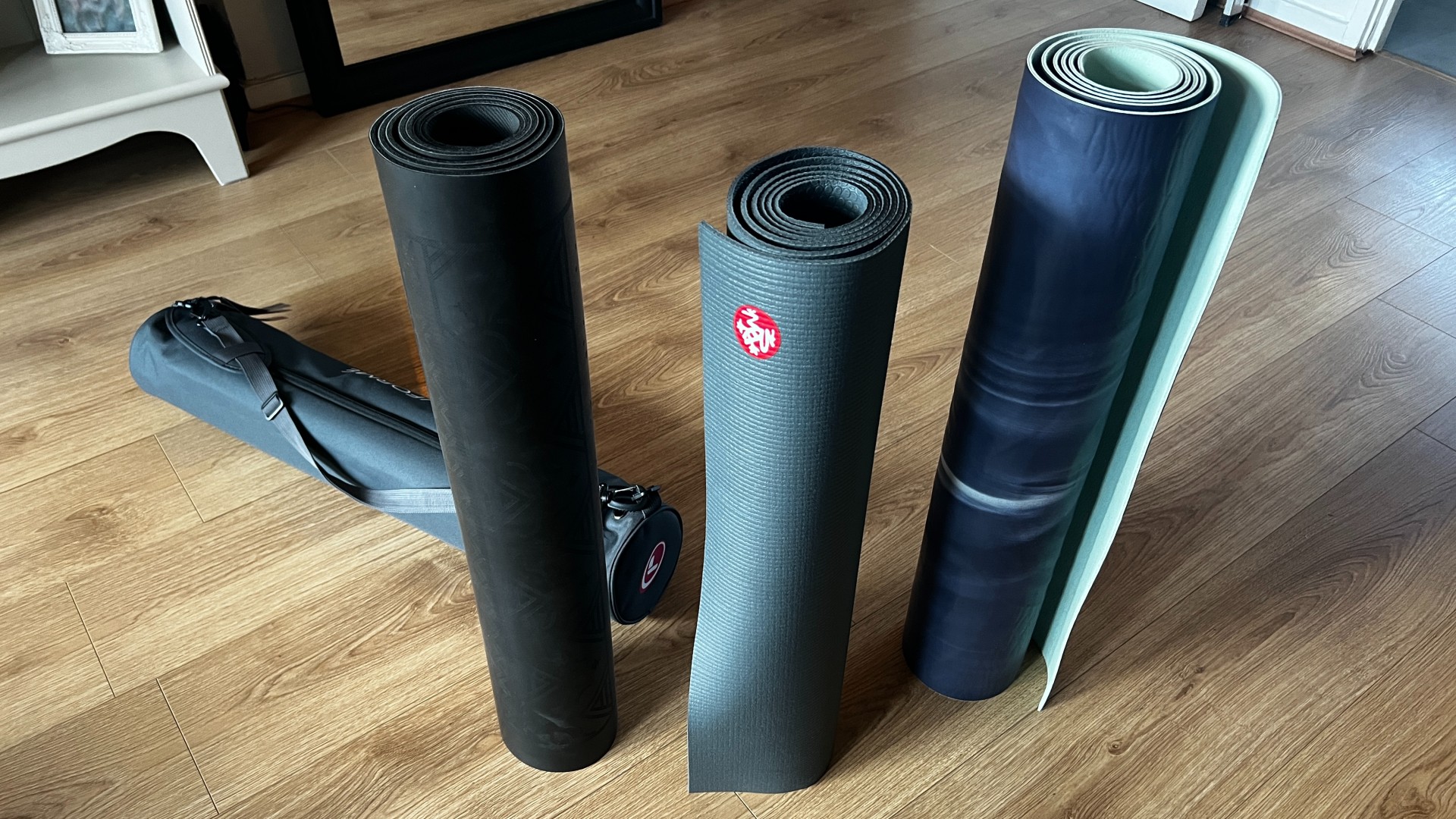
Most standard yoga mats are about ¼ inch thick, but you may want a thicker mat (4-6mm) if you require more cushioning for your wrists and knees. If you're a taller yogi and don’t want to go “off mat” while you practice, look for a longer yoga mat. Again thinner mats help people ground during inversions or balances, so they are worth considering if you plan to practice a more advanced and dynamic style.

Grip: Will the texture and surface provide grip and traction during your class or workout? The last thing you want is an injury because the mat slipped mid-practice. Look for mats that are designed to be grippy without the need for a yoga towel if this is important. Cork and rubber tend to resist sweat well, but a grip towel could also be worth purchasing and easily washes in the machine between sessions.
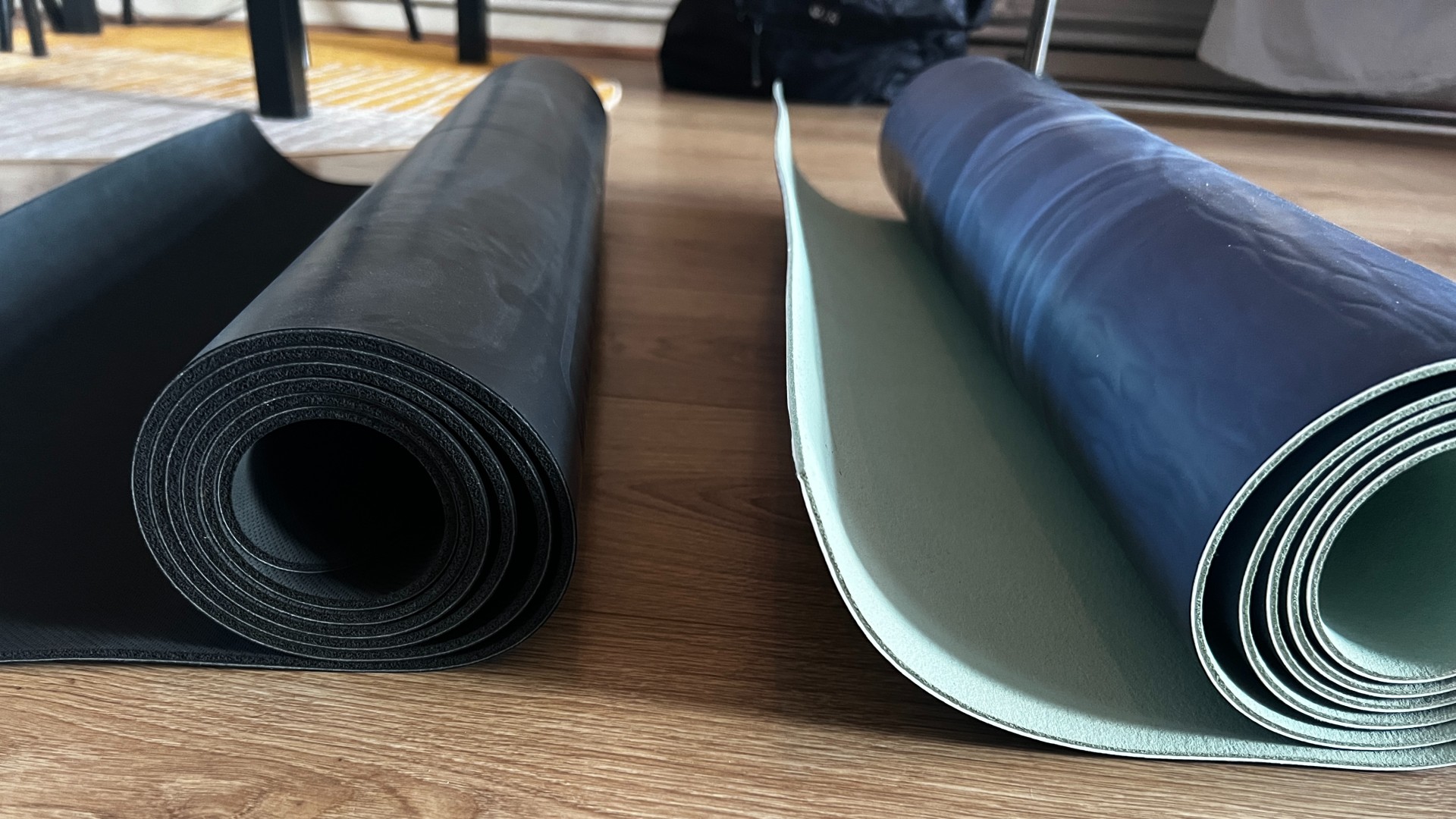
Odor: As for odor and visual appeal, those vary by the mat’s manufacturer. Some of the best yoga mats have an initial unpleasant smell, which can dissipate after cleaning. Check if your mat is sweat-wicking, which means it shouldn't absorb a lot of sweat, and this may reduce smells over time.
Cost: The best yoga mats come in a wide range of prices, from affordable, sub-$20 options to higher-end, brand-name selections. When it comes to cost, you may want to think about how often and how heavily you’ll use the mat. If you’re a dedicated yogi or you want to use a mat for HIIT workouts, you may want to splurge for a tougher mat that can hold up under the conditions. Otherwise, an Amazon Basics or similar variety could be worth considering.
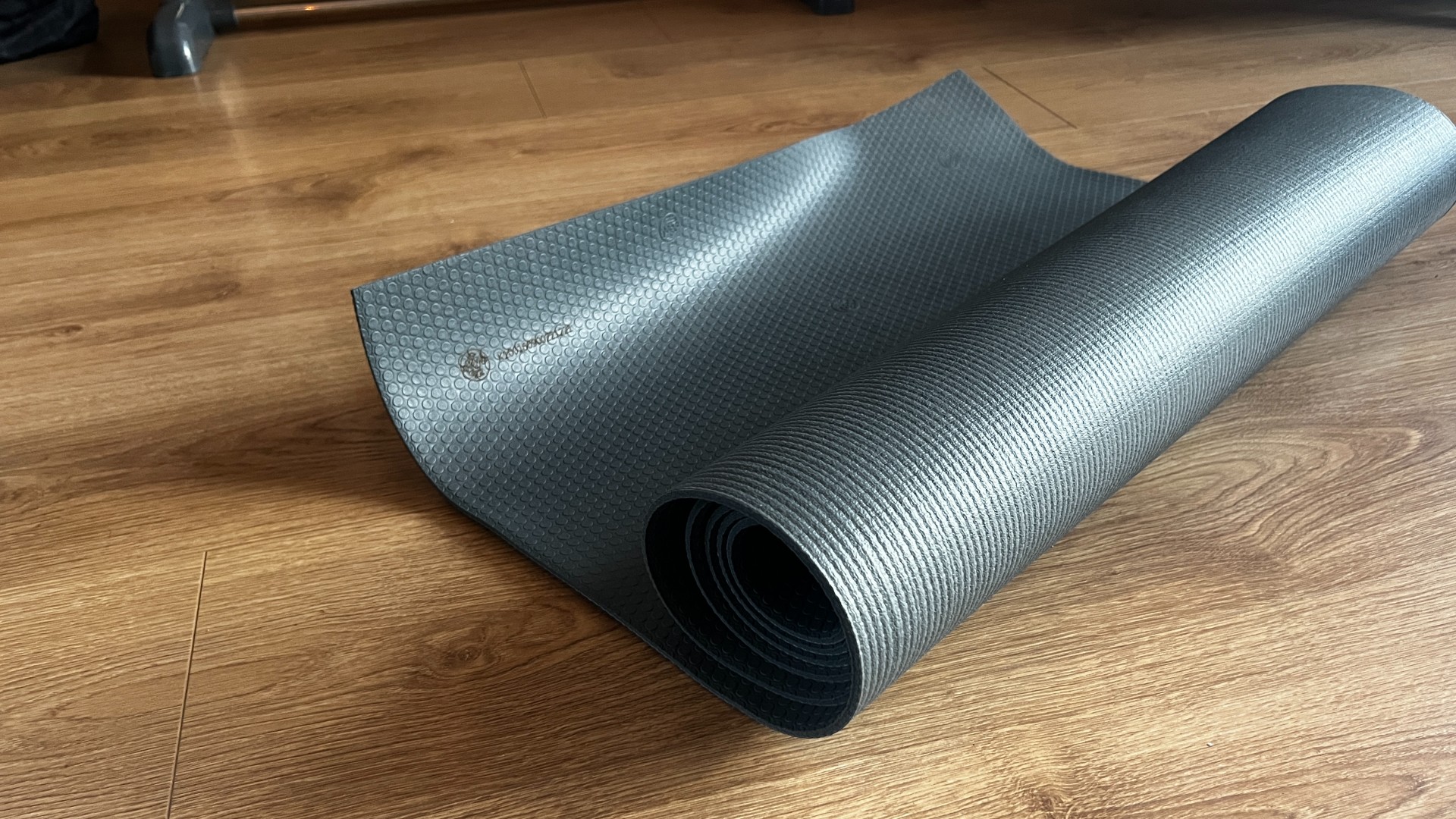
FAQ
What is the most eco-friendly yoga mat material?
If making sustainable choices is important to you, you should look into the materials of the mat, how and where it’s made and if it's recyclable. We've included sustainable options for you to consider, and many company websites will detail how and where the mats are made to help you make more informed choices.
"Mats will often list their materials as part of the packaging, so you should be able to pick out a sustainable or natural option," Skinner agrees. "Materials like foam or plastic are generally less eco-friendly... depending on the way the product is made. Sustainable materials also often have longer usage, so it's a win-win for your mat investment."
Mats made from natural materials like cork sound like great options, but can still negatively impact the environment, like contributing toward deforestation, for example, so it's no wonder people get confused.
As a general rule of thumb, a truly sustainable yoga mat will be made from recycled or natural materials and are recyclable or biodegradable. Many brands now use initiatives to tempt clients, like planting a tree for every mat bought or returned and offering the option to hand your used mat in once it's at life-end.
The Yogi Bare Paws deluxe mat is biodegradable, vegan-friendly and made with sustainable materials, including 100% recyclable packaging. The Jade Harmony mat in this guide has been self-titled "Nature's best yoga mat," and is made sustainably from rubber sourced from renewable rubber trees. Plus, the company plants a new tree for every mat sold.
What is the best hot yoga mat?
If you prefer hot yoga (or you tend to get sweaty during workouts), the grip will be your single most important factor when choosing the best yoga mat for hot yoga. A thinner mat will also help you ground down better during balances and inversions because there’s less distance. After all, you can connect better with the floor.
Natural rubber and cork tend to fare better in heat but can be harder to clean, and any brand that uses moisture-wicking materials will prevent slipping and bacteria build-up. You can often find this information on the brand’s website. We love cork yoga mats for this reason, but they can be harder to clean and stain more easily.
It’s best to consider the type of classes you prefer. Fast-paced classes will require quick transitions, so you’ll need to balance a grippy texture with the ability to move with ease, whereas Yin yoga lovers might prefer plush cushioning and thicker designs and grip might matter less.
We're big fans of the Lululemon Take Form and Yogi Bare Paws for grip, stability and beautiful design. However, instructors rave about the Jade Harmony mats once you've broken them in!
What is the best way to clean yoga mats?
Skinner advises you to think about the nature of your practice. "Hot yoga students will need to be cleaning their mat more intensely than a Yin yoga student who uses a blanket over the mat, for example," she explains. "Mats are best kept clean by wiping down after each session. If you practice in-studio, there will often be wipes or spray provided. At home, you can mix a small amount of soap with warm water and gently wipe down your mat."
Always check the instructions for your specific mat as brands offer varying advice. In general, we recommend using a yoga mat spray or a mix of water and white vinegar for a homemade solution. You could even add essential oils if the manufacturer's guidelines allow.
Every few weeks, give your yoga mat a deeper clean using water and a scrubber. Most yoga mats won't fare well in a washing machine, so we always recommend handwashing unless the brand specifies otherwise. Here's how to clean your yoga mat properly for more detail.
Is there a difference between an exercise mat and a yoga mat?
Yoga mats and exercise mats are often used interchangeably, but yes, there's a difference. Exercise mats are typically more durable and come in a range of thicknesses and sizes. They're designed to take the wrath of your sneakers, dumbbells, kettlebells and fast-paced movements, after all.
Yoga mats are made with materials such as rubber or cork and are tailor-made for different types of practice, like hot yoga or Yin. We advise not wearing sneakers or any type of shoe on your mat, and you'll need to take care of your yoga mat by spraying and wiping it down after use.
What is the best thickness for a yoga mat?
We've briefly covered this above. How thick you go will depend on your practice and your body. If you want a thicker mat of 4mm and above, that will provide ample cushioning for your joints but might make you more wobbly during advanced practice. Around 3mm, you'll feel much more connected and stable on the floor.
What mats do yoga instructors use?
"It really depends on personal preference," Skinner advises. "See if you like any particular studio mats, and check the brand name when you practice. Personally, I love the Sweaty Betty non-slip range."
We do, too!
Sign up to get the BEST of Tom's Guide direct to your inbox.
Get instant access to breaking news, the hottest reviews, great deals and helpful tips.

Sam Hopes is a level 3 qualified trainer, a level 2 Reiki practitioner and fitness editor at Tom's Guide. She is also currently undertaking her Yoga For Athletes training course.
Sam has written for various fitness brands and websites over the years and has experience across brands at Future, such as Live Science, Fit&Well, Coach, and T3.
Having coached at fitness studios like F45 and Virgin Active and personal trained, Sam now primarily teaches outdoor bootcamps, bodyweight, calisthenics and kettlebells.
She also coaches mobility and flexibility classes several times a week and believes that true strength comes from a holistic approach to training your body.
Sam has completed two mixed doubles Hyrox competitions in London and the Netherlands and finished her first doubles attempt in 1:11.
- Jane McGuireFitness editor

